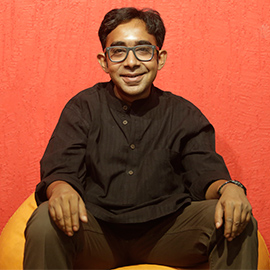Proposed Supreme Court branches: will they give Indians easy access to justice?

In India, the adage 'justice delayed is justice denied' rings painfully true. The staggering load of pending cases ensures that by the time the common person can get to the Supreme Court for a final decision, it's almost always a case of too little, too late.
Would it help if the apex court had a few branches in different zones of the country?
The question assumed importance when, on 13 April, the SC decided to entertain a petition by Puducherry-based lawyer V Vasanthakumar.
It wants to examine the issue of setting up National Courts of Appeal in four zones - Kolkata (East), Allahabad (North), Hyderabad (South) and Mumbai (West).
These courts are supposed to be regional benches of the Supreme Court, and there is a steadily rising belief that they would be instrumental in reducing the huge pendency of cases that has been plaguing the Indian judiciary.
But it's not that simple: deeper issues are at the heart of the problem.
The legal news website Bar and Bench reports that the government has opposed the court's move, contending that it would create more problems than it solves.
What are National Courts of Appeal?
The proposed National Courts of Appeal would deal with regular appeals in civil and criminal cases. The regular Supreme Court, with its seat in Delhi, would decide only cases involving Constitutional matters. In legal parlance, such courts are known as 'cassation courts'.
On 19 March 2010, a Bench of 27 Supreme Court judges turned down a plea for establishing such regional benches, stating that any such move might imperil national integrity, But now, the top court judges seem to have had a rethink.
Perhaps, their Lordships decided to accept the proposal mooted by a Constitution Bench of their predecessors in a 1986 case.
It could also be that they decided to go by what Justice MC Chagla (of the Bombay High Court) had said: "Courts exist for the convenience of the litigants and not in order to maintain any particular system of law or any particular system of administration."
This comment, by one of India's most distinguished judges and jurists, is important, because, due to India's territorial vastness and social and economic inequities, it often becomes an uphill task for people from different parts of the country to access the Supreme Court in Delhi.
The Law Commission of India, in its 229 Report (2009) also made an observation on similar lines, and recommended the establishment of regional benches.
It had referred to Article 130 of the Constitution, which decrees that the Supreme Court should be in Delhi only, unless the President allows the Chief Justice of India to set up regional branches. It recommended that the provision should be interpreted liberally, so that cassation courts can become a reality.
The core issues
Despite the widely-held perception that more branches of the Supreme Court would bring down the pendency rate, the real issues are different. They have got more to do with how India's top court decides to go about exercising its powers.
Two Constitutional provisions are of relevance here:
1. Article 142: This gives the court sweeping powers to 'do complete justice'. Vested with this power, the court, on many instances, has entertained petitions which verge on the frivolous, thus ensuring a wastage of judicial time.
2. Article 136: This paves the way for a wider range of problems. The provision states that the court should admit only those appeals which 'involve a substantive question of law of general public importance'. As TR Andhyarujina, noted jurist and a former Solicitor General of India has pointed out, the court has been exceedingly (and unfairly) liberal in admitting appeals, and in the bargain, forfeited its status as a Constitutional court. It has morphed into a regular court of appeal, which ought not to have been the case.
Andhyarujina pointed had pointed how 'substantive' had been reduced to a farce, becauste the Supreme Court was entertaining appeals which were devoid of any significant legal question.
In fact, in a 2010 decision, a bench of the apex court itself lamented how its benches have allowed Article 136 to be misused.
The court will next take up Vasanthakumar's plea on 25 April. One can only hope that the Justices will take the bull by the horns, and not stop at merely skimming the surface.
Edited by Shreyas Sharma
First published: 17 April 2016, 6:09 IST





![BJP's Kapil Mishra recreates Shankar Mahadevan’s ‘Breathless’ song to highlight Delhi pollution [WATCH] BJP's Kapil Mishra recreates Shankar Mahadevan’s ‘Breathless’ song to highlight Delhi pollution [WATCH]](https://images.catchnews.com/upload/2022/11/03/kapil-mishra_240884_300x172.png)

![Anupam Kher shares pictures of his toned body on 67th birthday [MUST SEE] Anupam Kher shares pictures of his toned body on 67th birthday [MUST SEE]](https://images.catchnews.com/upload/2022/03/07/Anupam_kher_231145_300x172.jpg)






